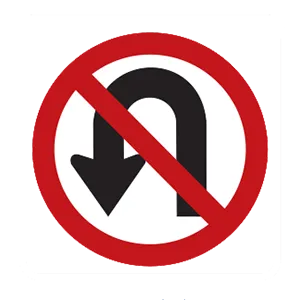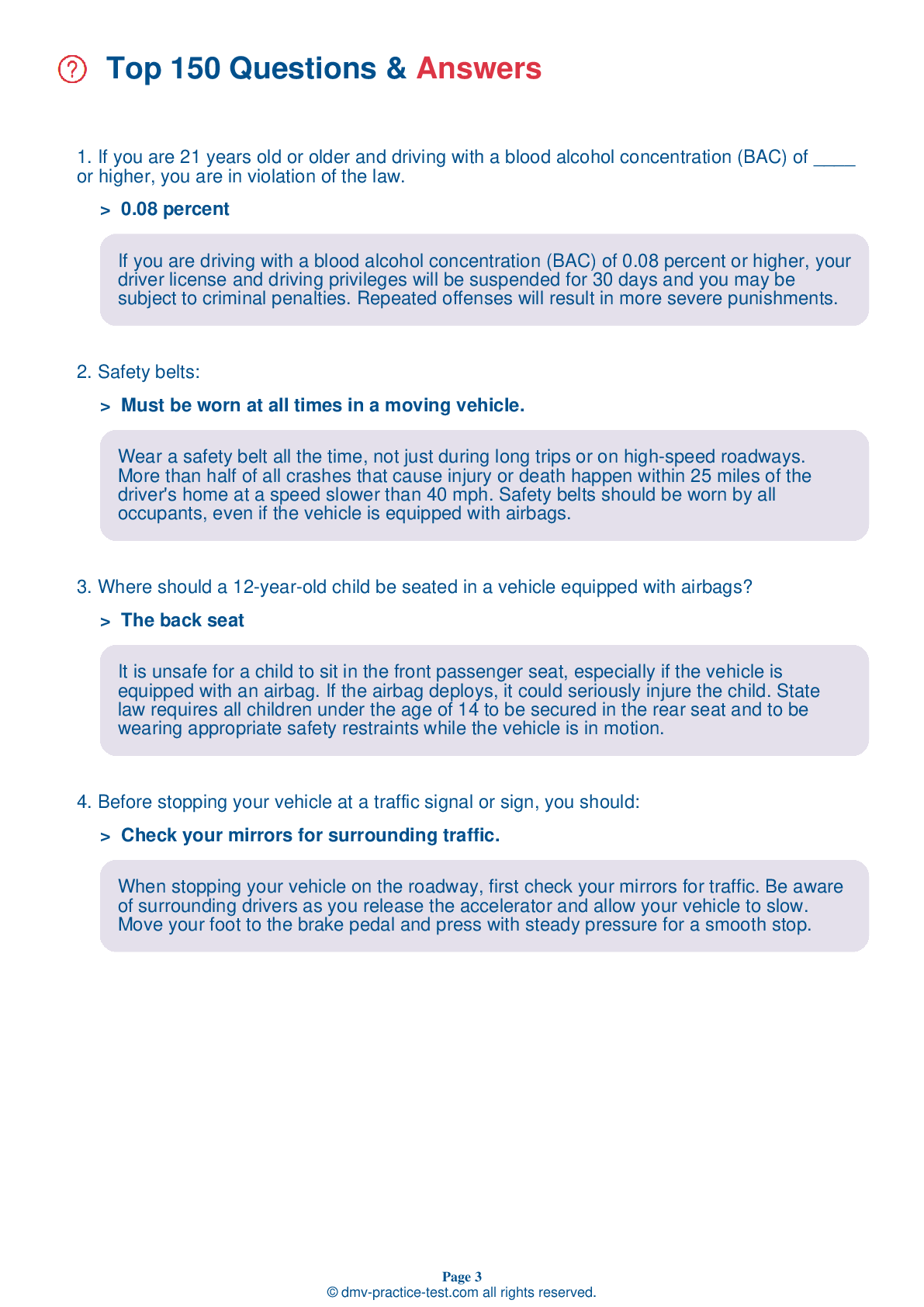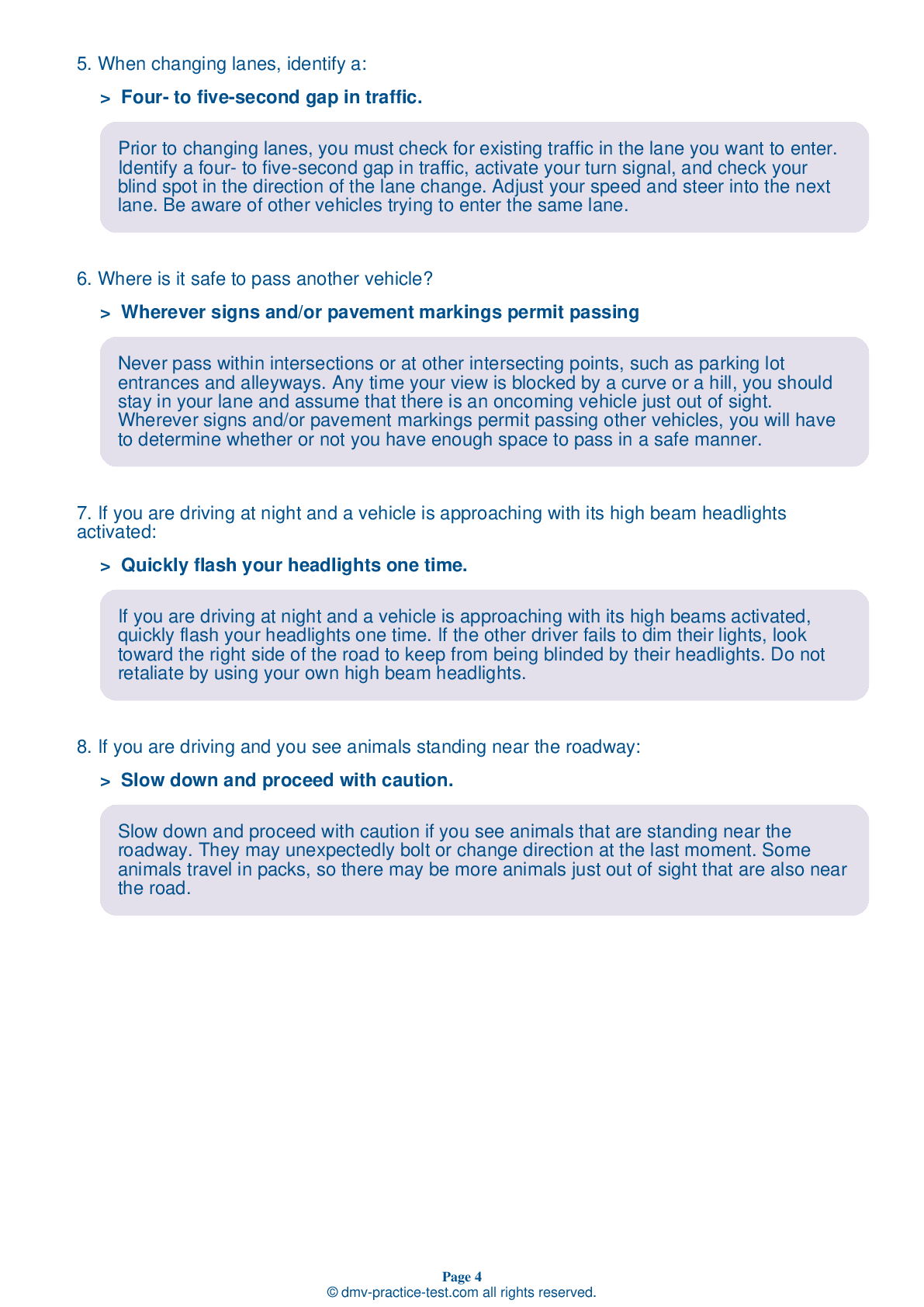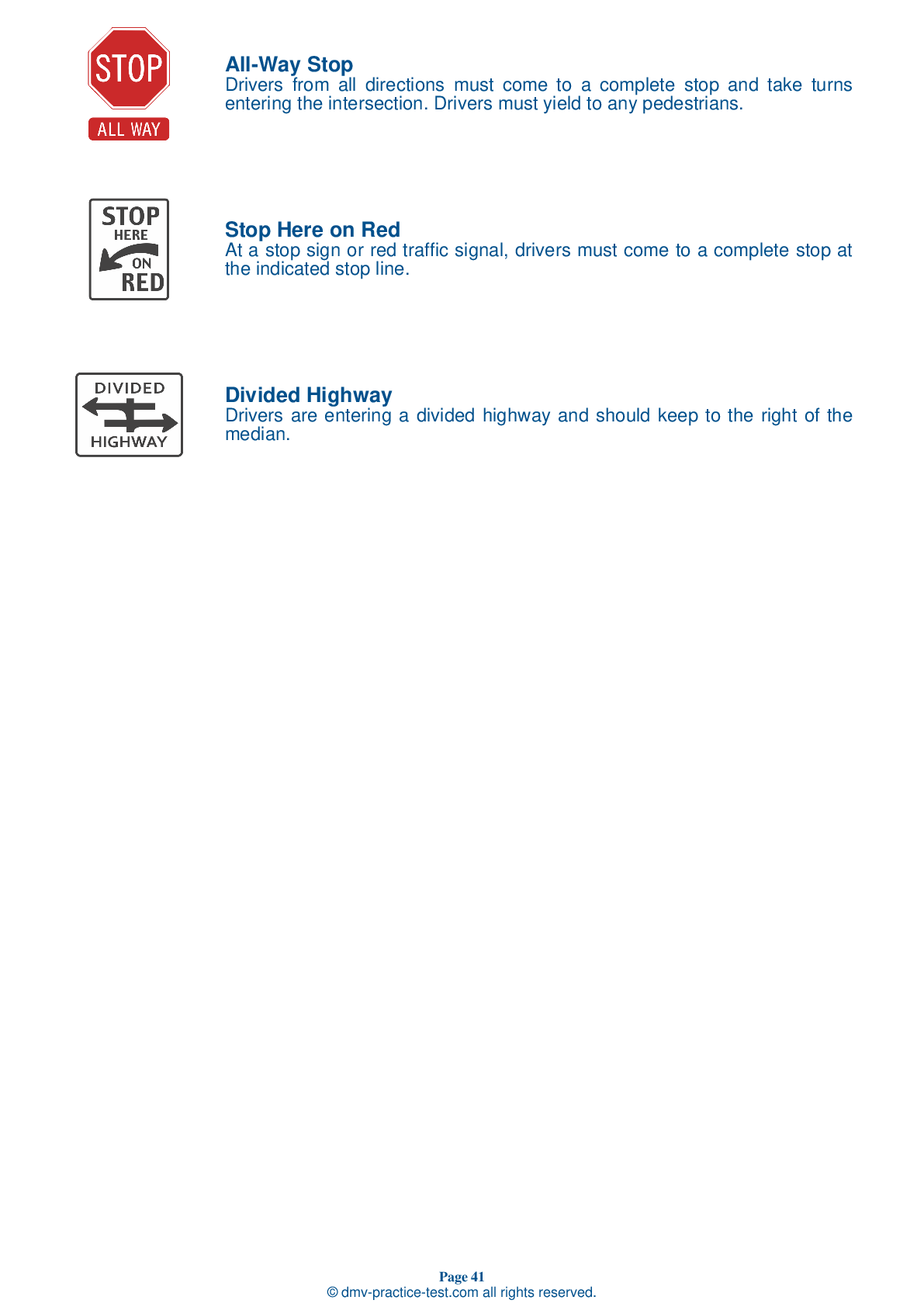FREE Kansas DMV Practice Test #21 Page 3 of 3
In Kansas, the DMV practise tests have been revised for January 2025. It includes questions based on the Kansas Driver Handbook's most essential traffic signals and regulations for 2025. Use actual questions that are very similar (often identical!) to the DMV driving permit test and driver's licence exam to study for the DMV driving permit test and driver's licence exam.
On the practise exam, each question gets a tip and explanation to help you remember the concepts. The written component of the official Kansas DMV test will include questions about traffic rules, traffic signs, and driving statutes, as well as information from the Driver Handbook.
To obtain a passing grade, you must correctly answer 20 of the 25 questions. Take our DMV practise exam to help you prepare for your Kansas instruction permit or driver's licence.
The DMV exam is available in several languages.
Using any kind of testing assistance will result in an automatic fail, and the DMV may take additional action against your driver's licence, so stay away from it.
17 . If your vehicle begins to skid, you should:
If your vehicle begins to skid, release the accelerator or brake pedal to regain vehicle balance. Steer in the direction of the skid to regain control of the vehicle.
18 . This sign indicates that:
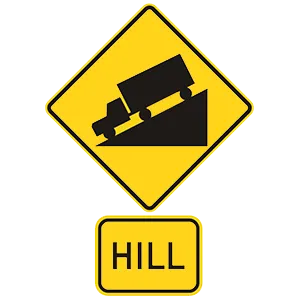
Warning signs are usually yellow with black markings. This sign warns drivers about an upcoming steep hill. Drivers should slow down and be ready to control their speed and protect their brakes from damage.
19 . What does this road sign mean?

An octagonal sign always means stop. When approaching a stop sign, you must come to a complete stop at the marked stop line and proceed only when it is safe to do so. If there is no stop line, stop before the crosswalk. If there is no crosswalk, stop before the intersection at a point from which you can see any oncoming traffic.
20 . Just like alcohol and other drugs, drowsiness can:
Not getting enough sleep is a cause of poor driving behavior. Just like drugs and alcohol, sleepiness slows reaction time, decreases awareness, and impairs judgment.
21 . Fatigue increases the risk of:
Fatigue causes errors related to speed and distance, increases your risk of being in a crash, and causes you to take more time to make decisions. When you are fatigued, you could fall asleep behind the wheel and crash, injuring or killing yourself or others.
22 . Various traffic control devices in construction and maintenance work areas are the color:
Orange warning signs are used in and around work zones. Use special caution when you see orange signs, cones, or barriers on a roadway.
23 . This road sign means:
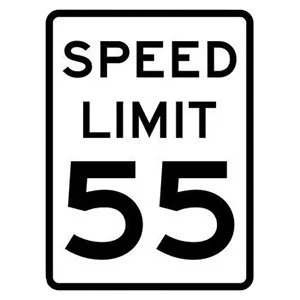
Regulatory signs provide notice to road users of traffic laws that must be obeyed. This particular sign tells you the maximum speed limit for the stretch of highway where it is posted. You may drive more slowly than the posted speed limit, based on road conditions, but it is illegal to drive any faster than the posted speed limit.
24 . When driving at night, you should:
Increase your following distance when it is difficult to see due to darkness. Use headlights to increase visibility, following the rules for proper use of high beams and low beams. Avoid looking directly at the headlights of an oncoming vehicle to avoid being blinded by the glare.
25 . This road sign means:
